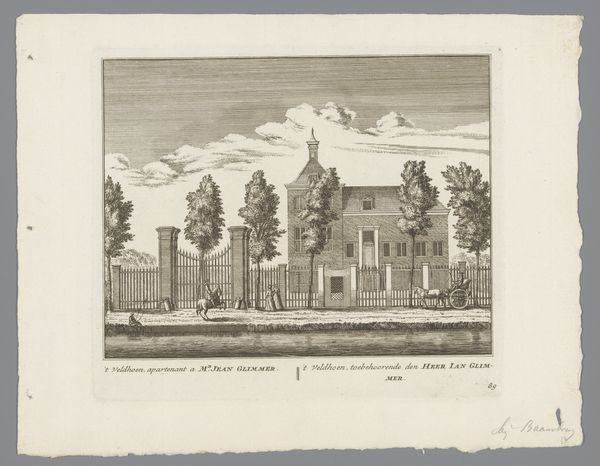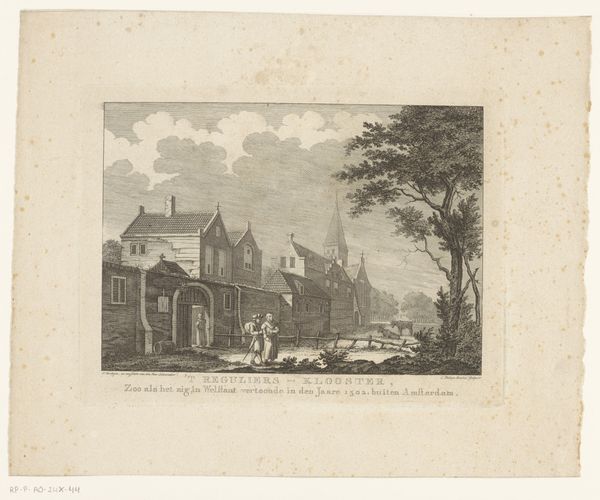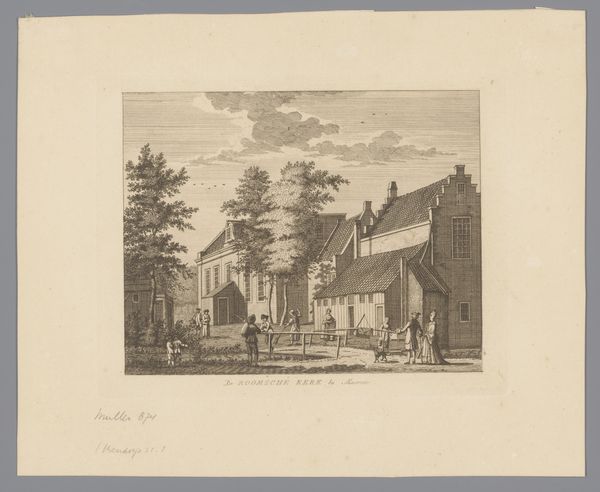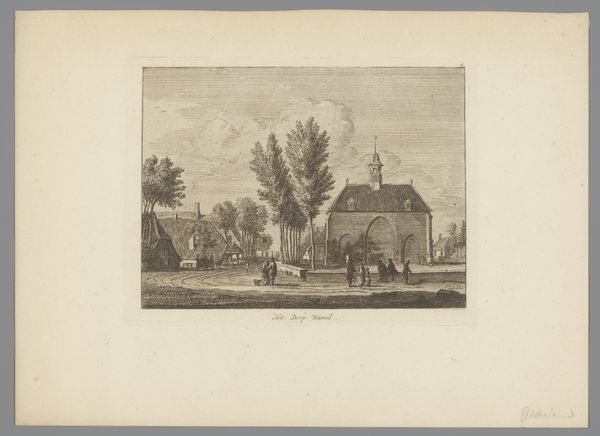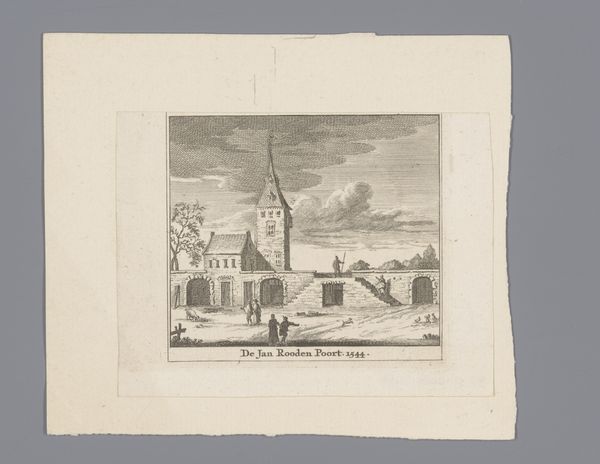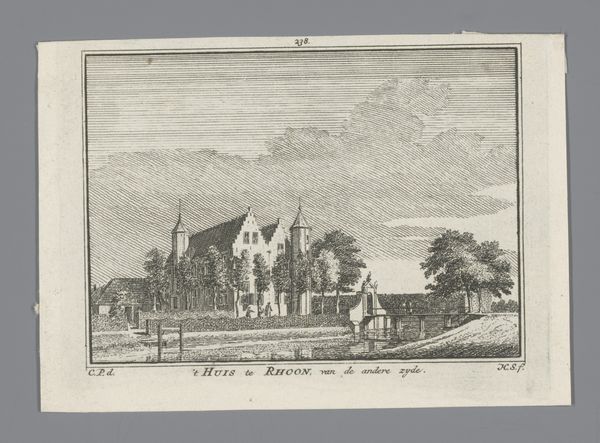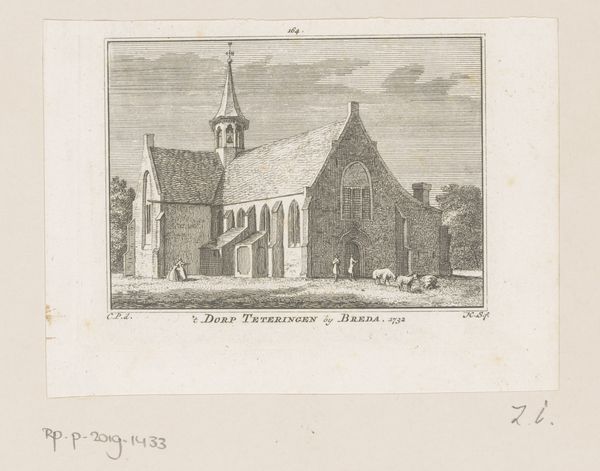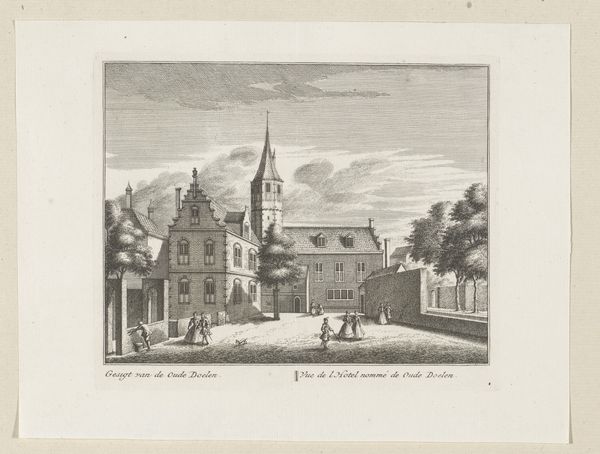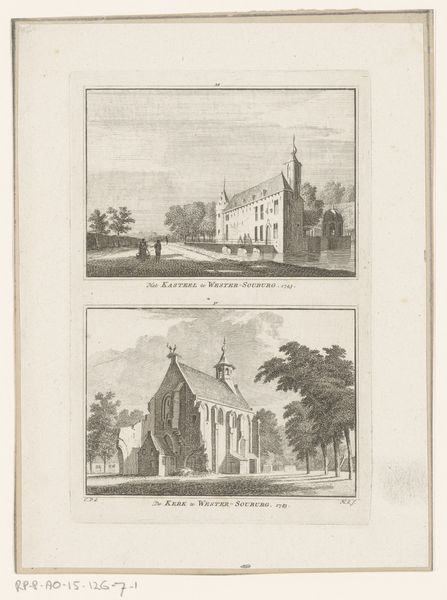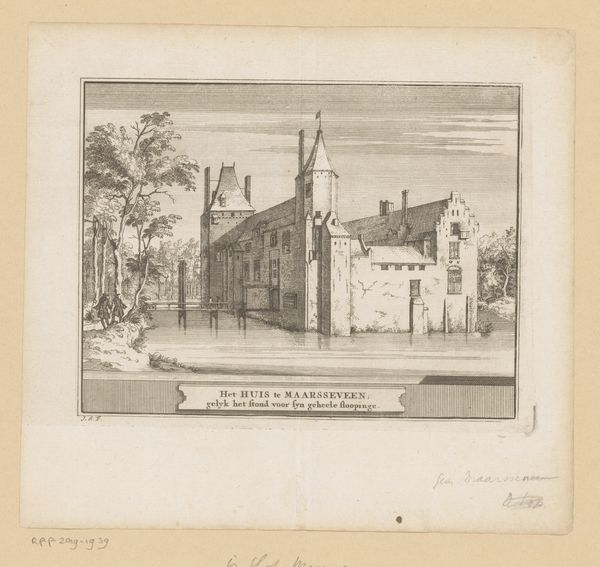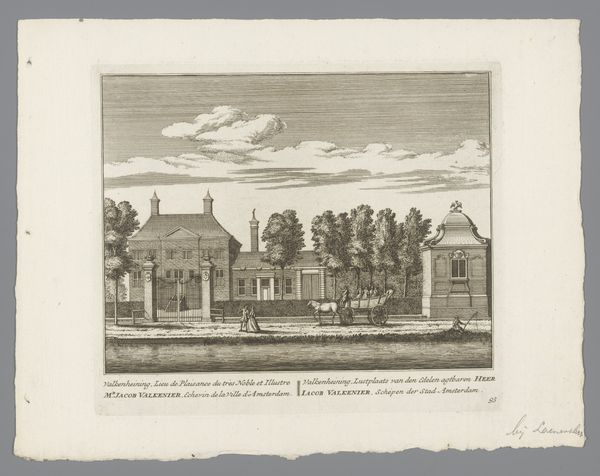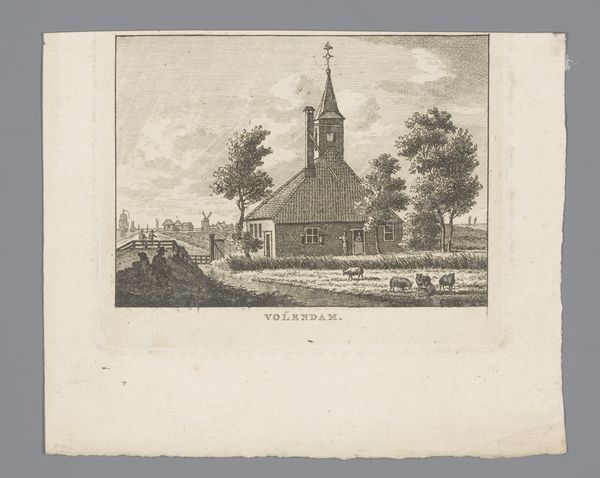
Het Minderbroedersklooster te Amsterdam na de plundering tijdens de Alteratie in 1578 c. 1752 - 1789
0:00
0:00
print, engraving
#
dutch-golden-age
# print
#
landscape
#
cityscape
#
history-painting
#
engraving
Dimensions: height 170 mm, width 222 mm
Copyright: Rijks Museum: Open Domain
Caspar Jacobsz. Philips created this print of the Minderbroeders monastery after it was plundered in 1578. It’s a scene rendered entirely through the technologies of reproduction: etching and engraving, which allowed Philips to make multiple identical images. The materiality of printmaking is critical to its social function. The graphic, linear quality comes from the artist’s direct engagement with the metal plate, incising lines that would hold ink. This is how the image was multiplied, and distributed widely, as an early form of mass media. Consider the labor involved: the mining and processing of metals, the skilled work of the engraver, and the operation of the printing press. Also, the work of dissemination and sale. It's a complex interplay of artistic skill, industrial processes, and commercial distribution. This print isn't just a picture; it's a record of historical events. By understanding the materials, and techniques of its making, we gain insight into the social, economic, and political conditions of the time.
Comments
No comments
Be the first to comment and join the conversation on the ultimate creative platform.

